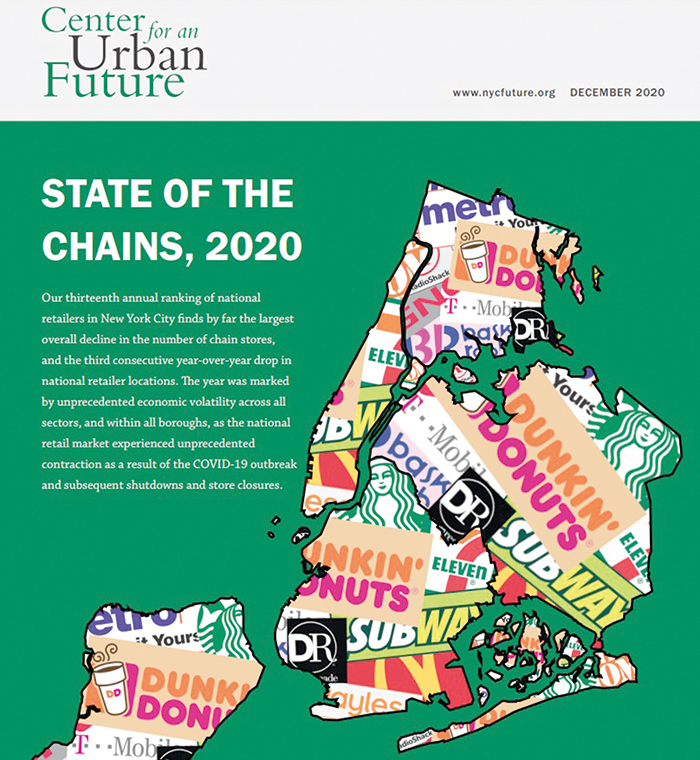File Photo
“In order to protect our communities from flooding, preserve our shorelines, and restore New York’s precious water ecosystems, it is imperative that we properly rehabilitate our invaluable resources through the Water Resources Development Act every year,” said Senator Schumer.
By Forum Staff
More than 1,000 chain stores across New York City—or a little less than one out of every seven chains that were open this time last year—have closed their doors over the past twelve months, underscoring the immense difficulties facing retail businesses large and small during the pandemic, according to Center for an Urban Future’s State of the Chains, 2020 report.
Overall, the number of chain stores in New York City declined by 13.3 percent—with 2.0 percent closing temporarily and 11.3 percent not indicating whether the closures are permanent or temporary. This is by far the largest year-over-year decline in chain stores since the Center for an Urban Future began its annual analysis of the city’s national retailers 13 years ago, eclipsing last year’s 3.7 percent drop and the 0.3 percent decline in 2018.
CUF’s 13th annual analysis of national retailer locations in New York City, which is based on data from store locators compiled between November 16 and December 5, 2020, shows that the 319 retailers listed in last year’s ranking reduced their total footprint by 1,057 store locations (including 897 closures and 160 temporary closures). The number of chain stores declined from a total of 7,948 stores in 2019 to 6,891 stores in 2020—a 13.3 percent decrease.
While every borough experienced notable declines in chain stores, Manhattan had the biggest losses, with the number of chain store locations in the borough shrinking by 17.4 percent (of which 2.8 percent were closed temporarily). In fact, Manhattan accounted for nearly half of all chain store closures (520 out of 1,057) citywide. Queens had the second-largest decline (decreasing by 11.2 percent, with 0.6 of those temporarily shuttered), followed by Brooklyn (down 11.6 percent, with 2.5 percent temporarily closed), the Bronx (declining by 9.9 percent, including 2.0 percent temporarily closed), and Staten Island (down by 8.5 percent, with 0.7 percent temporarily closed). This is the second consecutive year in which all five boroughs have registered declines, but it is the first year in for any borough to see a decline of more than 10 percent. Last year, the sharpest drop was a 4.9 percent decline in Queens (-91 stores).
Few retailers avoided store closures. Dunkin’ experienced a year-over-year decline in stores in the city for the first time since CUF began tracking chain stores 13 years ago. Although Dunkin’ still has far more store locations in the city than any other national retailer, it has 18 fewer than this time last year. The city’s other big coffee chain, Starbucks, closed even more stores (49). Metro PCS, the city’s second-largest chain retailer, shuttered 134 stores over the past year—a bigger decline than CUF has recorded in any borough since this study began. Meanwhile, Sprint closed all 89 stores, though much of that likely stems from its merger with T-Mobile, which was approved earlier this year.
Other retailers that registered a net loss of at least 15 store locations include: Duane Reade (-70), GNC (-51), Subway (-30), Modell’s (-43), Baskin-Robbins (-30), NY Sports Club (-26), Jimmy Jazz (-26), M·A·C Cosmetics (-25), Papyrus (-22), Soul Cycle (-21), Dig Inn (-19), New York & Co. (-17), Pret A Manger (-16), and Mattress Firm (-15). But several of these chains reported significant temporary closures, suggesting that some may bounce back strong next year.
Photo Courtesy of Center for an Urban Future

